
8 Best Event Email Marketing Platforms for 2025
When organizing an event, from webinars to conferences, core actions like boosting registrations, reducing no-shows, or following up effectively can be very demanding.
Using email marketing tools for events is one of the most effective ways to keep your event top-of-mind. It helps you build anticipation before the event and engage attendees even after it has passed.
But with so many email marketing tools for events on the market, how do you choose the right one?
This guide will help you choose the email tool that can streamline your communication, boost registrations, and automate your post-event follow-ups without stress.
Get from send to attend
Plan, promote, and track your events with smart automation and real-time insights.
Try MoosendBest Event Email Marketing Platforms: Compared
| Key Features | Pricing | Free Plan/Trial | |
| Moosend | Visual workflow builder, lead capture features | $9/month | 30-day free trial |
| Constant Contact | Built-in RSVP functionality | $12/month | 14-day free trial |
| GetResponse | Webinar hosting features | $19/month | 30-day free trial |
| ActiveCampaign | Powerful automations | $15/month | 14-day free trial |
| MailerLite | Multiple event and webinar integrations | $10/month | Yes (limited) |
| HubSpot | Centralized CRM and data management | $15/month/seat | Yes (limited) |
| Kit | Visual automation builder | $39/month | Yes |
| Eventcombo | Behavior-based triggers | Custom | No |
Email Marketing Tools for Events: What to Look for
Selecting the right email platform involves finding a tool that supports your entire event workflow, from start to finish. Whether you’re hosting a quick webinar or a multi-day conference, the platform should take work off your plate, not add to it. That also applies to actions behind the scenes, such as campaign metrics.
Here’s what event organizers should prioritize when evaluating email marketing tools for events.
Automation workflows
As an event marketer, you know that there is no time to send every reminder manually. Looking for tools that offer email automation for events, such as pre-scheduled invitations, follow-ups, last-minute alerts, and post-event thank-you emails, is imperative.
Bonus points if the tool offers a visual workflow builder, allowing you to craft the attendee journey from start to finish and make any necessary adjustments in real-time.
RSVP and registration forms
Streamlined registrations are key when you want to drive conversions. Look into platforms with built-in landing pages, signup forms, or RSVP forms capabilities that integrate seamlessly with your emails. Try to avoid awkward third-party tools and switching between multiple tabs.
Smart list segmentation and personalization
Targeting is important when it comes to email marketing for events. Marketers should be able to craft email content that differs according to the recipient, like speakers, VIPs, first-time attendees, or individuals who didn’t complete their registration.
Advanced list segmentation lets you tailor messages, thereby increasing relevance and ultimately engagement. The right platform will provide tools that help you personalize subject lines and body content based on attendee data, visitor behavior, or specific segments.
Advanced analytics and integrations
An email marketing platform’s job doesn’t stop once the event is finished. Choose a platform that will show you what worked—and what didn’t—with detailed analytics on open rates, click-through rates, conversions, and more.
Ensure it offers CRM capabilities or integrates seamlessly with the platform you’re already using. The same goes for your ticketing system or any separate event platform, so data flows automatically, making your job easier, even if you don’t want to give up the tools you’re already using.
Pricing and scalability
When you’re running events as a business, budget matters. Choose a pricing mode (e.g., subscriber-based, email volume-based) that aligns with your growth goals and event strategy. Make sure it’s transparent and scales with your needs, not against them.
Flexible email editor and a variety of template designs
It’s important to have a tool that is flexible and can save you time, effort, and resources from preparing your next email campaign. Your email marketing platform should do this for you. Since you’ll be sending everything from “You’re invited” emails to personalized “Thank you for attending” post-event notes, a user-friendly email editor and event-specific templates are a must-have.
Lastly, look for a no-code builder, mobile-responsive designs, and plug-and-play templates that save you time while still looking professional.
The Best Event Email Marketing Platforms
Now that you know what features to prioritize, it’s time to find the platform that checks all the right boxes. From robust automation to budget-friendly options, we’ve rounded up the best email marketing tools for events to choose the one that best fits your event email marketing strategy.
1. Moosend
Pricing: Paid plans start at $9/month, 30-day free trial (Sign up here)
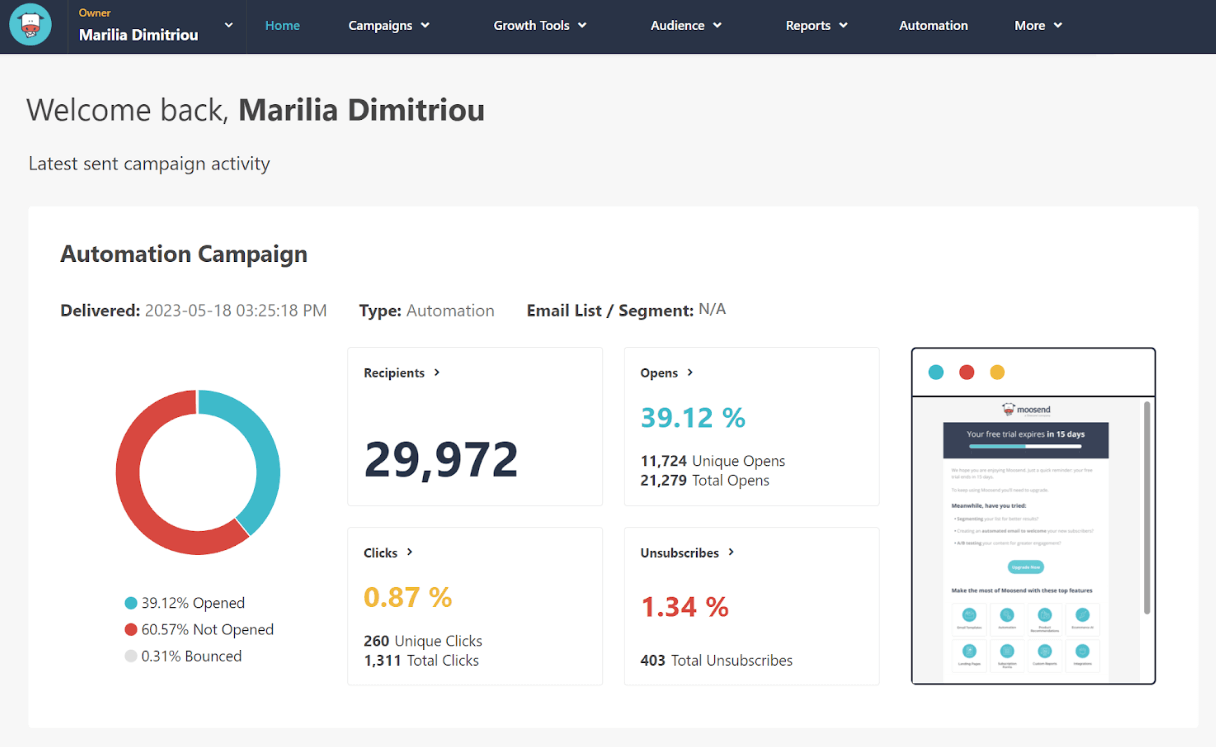
Moosend is a feature-rich platform that’s gaining traction among event marketers who need robust features without the steep learning curve or a hefty price tag.
The visual automation builder allows you to create workflows triggered by attendee behavior. For example, you can send a reminder email 24 hours before the event, or a thank-you email the day after. These automations eliminate mundane tasks while helping you stay connected to your audience.
The drag-and-drop email editor also simplifies email campaign creation. There’s no need to have a design background to craft beautiful event marketing emails. Moosend’s template library features 130+ fully customizable email templates. They can be adapted for every event email marketing action, from save-the-dates to post-event surveys.
Moosend also offers advanced segmentation. You can segment audiences by registration status, campaign interactions, and user behavior (opens, clicks, or form submissions). This way, you can send emails with tailored event subject lines and content that appeals to VIP guests or re-engages no-shows.
Capturing event sign-ups is easy with landing pages, online forms, and ready-to-use templates that help you get started quickly. With real-time analytics, you’ll know exactly how your campaigns are performing and what to correct or enhance for your next event.
Moosend Features
- Workflow editor with trigger-condition-action logic
- No-code email editor
- Segmentation and personalization capabilities
- Built-in AI Writer
- Built-in lead generation tools
Pros
- Affordable pricing with full access to automation tools
- Pre-built email templates tailored for events
- High deliverability and easy audience segmentation
Cons
- No forever-free plan
- Not many native integrations
Pricing
Moosend offers a free 30-day trial that covers all features, while pricing starts at $9/month for the Pro plan. The platform also offers the Moosend+ plan (custom-made by you to fit your needs) and an Enterprise plan.
2. Constant Contact
Pricing: Paid plans start at $12/month, 14-day free trial

Constant Contact is geared towards small to medium-sized organizations and smaller teams. It can help you handle event promotions, RSVPs, and follow-ups without needing deep technical know-how or a secondary tool.
Constant Contact integrates with Eventbrite for registration and ticketing. You can create an event directly within the platform and set up everything from registration forms and branded landing pages to payment collection and automated email reminders. It’s ideal for in-person events, such as fundraisers, workshops, community gatherings, or networking sessions.
Event pages are fully customizable and mobile-friendly, allowing you to showcase key details like schedules or speaker bios, even though advanced layout flexibility is somewhat limited compared to some competitors.
Once your event is live, Constant Contact makes it easy to send personalized invites, schedule follow-ups, and automate post-event thank-you emails. These campaigns can be triggered based on registration behavior or attendance, ensuring you always reach the right people with the right message. Email automation is available, though relatively basic at lower tiers.
Lastly, the platform’s email, SMS, and social media marketing options mean you can promote your event across multiple channels without leaving your dashboard. Perfect for community-focused campaigns that rely on local engagement.
If you only need simple, mobile-first signup forms rather than a full email marketing suite, Constant Contact also offers Lead Magnet, a lightweight tool that works independently or alongside the platform. Lead Magnet builds a mobile-first microsite with a form that captures contact info and sends instant notifications. Its pricing is very accessible, as it’s free for 7 days, then $1/month for 3 forms and 30 notifications, or $5/month for unlimited usage.
Its pricing, minimalistic and intuitive platform, and plethora of form-specific tools make it a strong option for organizers who don’t need Constant Contact’s broader email and automation features and just want fast, modern form capture.
Constant Contact Features
- Built-in RSVP management tool
- Multichannel campaigns
- Segmentation feature with pre-built or custom segments
- Extensive template library
- Native Stipe and PayPal integrations
Pros
- Easy-to-use event marketing features for SMBs
- Native event creation and ticketing tools for seamless performance
- SMS and social media marketing options included
Cons
- Limited features at lower tiers
- A/B testing options are limited to email subject lines
Pricing
Constant Contact offers a free 14-day trial. Paid plans start at $12/month and include event hosting features.
3. GetResponse
Pricing: Prices start at $19/month, 30-day free trial
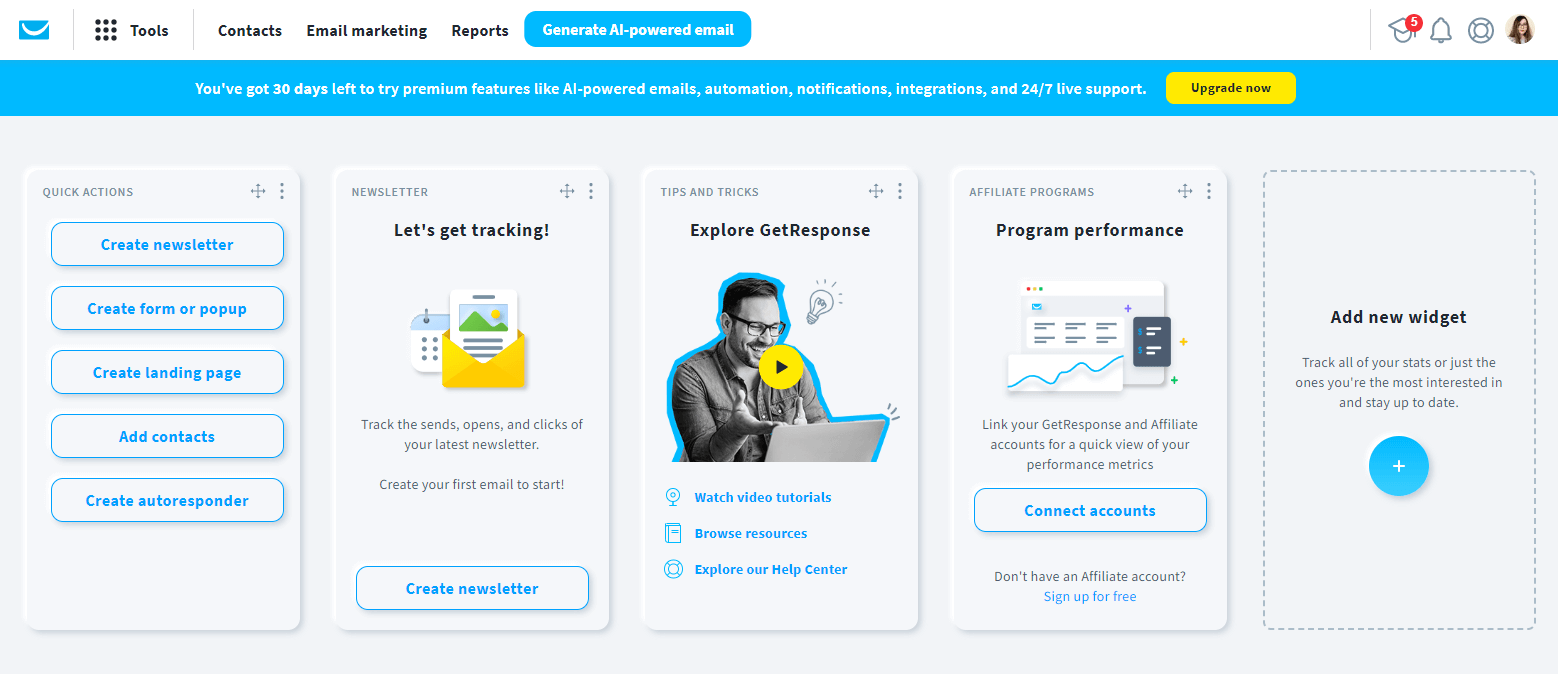
GetResponse is an email marketing and automation platform dedicated to virtual events, online workshops, and webinars, providing you with everything you need to manage and promote digital experiences.
Unlike most of its competitors that rely on integrations and third-party tools, GetResponse offers built-in webinar hosting for users on mid-to-high-tier plans, reducing the need for third-party integrations. This includes registration forms, event reminders, interactive Q&As, and follow-up sequences. For event marketers, this means fewer moving parts and more control.
You can create a custom registration page, trigger a confirmation email, send automated reminders leading up to the event, and follow up with no-shows or attendees, all with one tool.
Their conversion-focused email and landing page funnels are pretty useful. You can choose a pre-built funnel template specifically designed for events and simply plug in your content. These funnels guide your audience from awareness to registration to post-event engagement, minimizing drop-offs and boosting sign-ups. The funnel templates, while helpful, can be somewhat rigid. You can customize them, of course, but this may require time and experimentation to achieve the perfect look and feel.
In addition to its robust automation engine, GetResponse offers segmentation, tagging, and personalization features that help you send the right message to attendees based on behavior.
GetResponse Features
- Easy-to-use drag-and-drop email builder
- Powerful visual workflow builder
- AI-powered course creator and website builder
- Automated sales funnel creator
- Multi-channel approach with web push notifications and SMS marketing
Pros
- Built-in webinar hosting platform—no external tools needed
- Pre-made event funnels for lead generation, registrations, and reminders
- Combines landing pages and email automation to drive attendance
Cons
- Users need to purchase a mid-to-high-tier plan or an add-on to access webinar hosting.
- Attendee caps apply based on pricing tier.
- Steep learning curve for automation workflows and funnel setup.
Pricing
GetResponse offers a free 30-day trial. Paid plans start at $19/month for unlimited email sends and 1,000 contacts.
4. ActiveCampaign
Pricing: Starts at $15/month, 14-day free trial
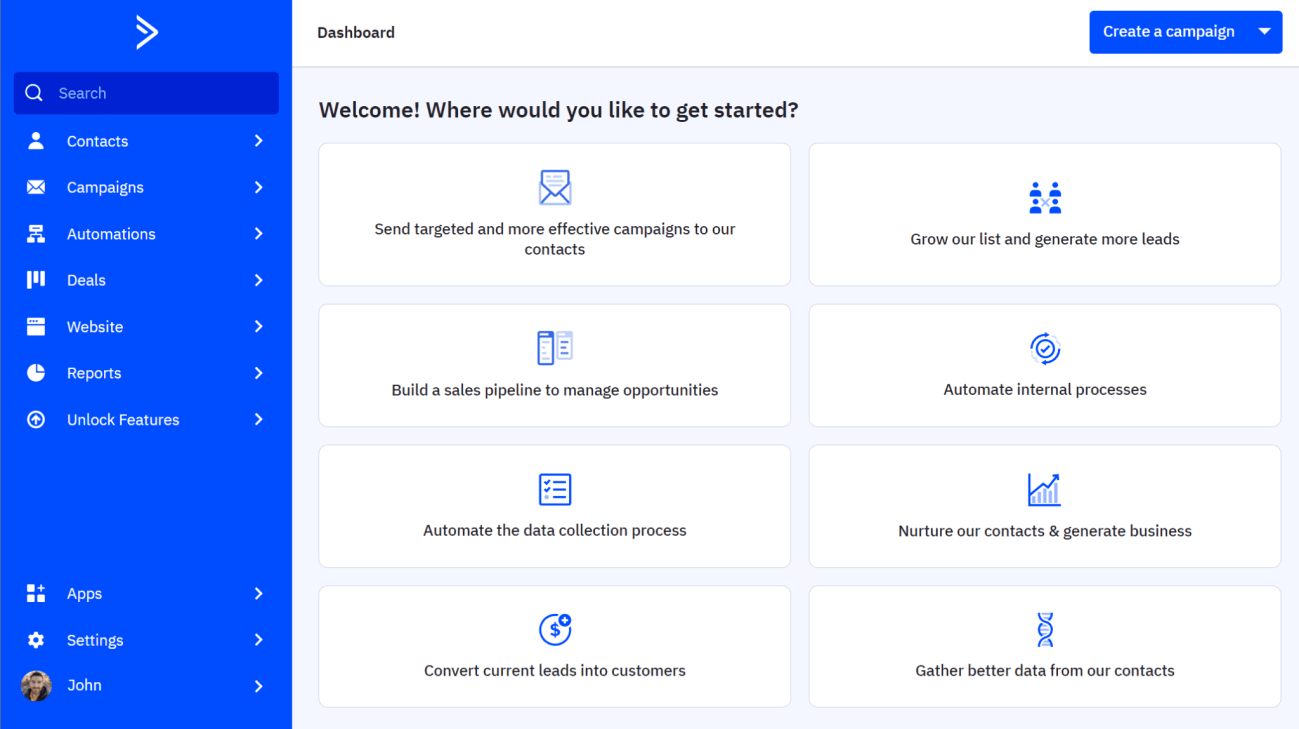
ActiveCampaign is an email marketing tool designed for event marketers who want to run sophisticated, multi-touch campaigns, such as conferences, VIP experiences, and hybrid summits.
The platform’s automation builder makes it easy to design attendee workflows that adapt in real time. For example, you can send a session reminder only to users who opened your keynote announcement, trigger a re-engagement campaign for no-shows, or auto-tag VIPs for personalized follow-up. However, while the automation builder is powerful, new users may find it overwhelming at first, especially if they’re used to simpler, template-driven platforms.
Another key feature is its built-in CRM, which enables event professionals to manage guest lists, speaker contacts, and sponsor relationships within the same system as their marketing automation (available on higher-tier plans). When paired with lead scoring, you can quickly identify your most engaged attendees and target high-value segments with upsells, exclusive invitations, or post-event offers.
The platform also supports dynamic content and multivariate A/B testing, as well as lead-generation options. However, according to users, its landing page builder is less flexible, offering fewer design options than competitors, which could be a limitation when it comes to branded events.
If your events rely heavily on segmentation, behavioral triggers, and personalized attendee journeys, ActiveCampaign offers an impressive toolkit.
ActiveCampaign Features
- Dedicated event email templates
- Visual automation builder with a multichannel approach
- CRM and sales automation
- SMS and WhatsApp marketing capability
- Lead generation features (landing pages, subscription forms)
Pros
- Powerful, visual automation builder with conditional logic
- Integrates with common event marketing tools (Eventbrite, Zoom, Calendly, etc.)
- Advanced segmentation and lead scoring for targeted event campaigns
Cons
- Higher price point than entry‑level tools
- Steeper learning curve for complex workflows
Pricing
ActiveCampaign’s prices start at $15/month; the platform offers a free 14-day trial. However, the platform’s real power comes with a steeper price tag and technical overhead, which may not be ideal for very small teams or those running occasional, one-off events.
5. MailerLite
Pricing: Paid plans start at $10/month, limited free plan

MailerLite is a practical and efficient choice for small to mid-sized event teams who need to launch clean, professional-looking marketing newsletters quickly and effortlessly.
Its drag-and-drop email builder is ideal for marketers without design or coding experience. Countdown timers, event banners, RSVP-style buttons, and dynamic content blocks can all be easily added to your email in minutes. However, those seeking in-depth brand customization or complex conditional logic may find the builder somewhat limiting, especially when compared to more advanced platforms.
When it comes to automation, you can set up sequences that send “Thanks for registering” confirmations, pre-event reminders, and post-event feedback requests, all triggered by user behavior. However, automation paths can’t branch as flexibly as some event marketers might want. According to user reviews, behavioral tracking is basic, and deeper workflows often require workarounds or manual tagging.
While MailerLite’s analytics are somewhat surface-level, tracking opens, clicks, and unsubscribes still helps fine-tune your event marketing strategy. Lastly, the platform includes landing pages and signup forms, allowing you to build a basic registration flow directly within the platform.
All in all, MailerLite delivers with easy setup, polished designs, and no-nonsense automation for event promotion. It’s particularly well-suited for teams managing recurring webinars, meetups, or educational series.
MailerLite Features
- Built-in website and blog builder
- Dedicated feature for adding Instagram and Facebook posts in email campaigns
- Drag-and-drop email editor
- A variety of webinar and event marketing integrations
- iPad subscribe app
Pros
- Clean, minimalist email builder ideal for beginners
- Built-in RSVP blocks and automated reminder flows
- Affordable pricing that scales with your needs
Cons
- Somewhat basic RSVP tracking
- Lacks an enterprise-level feature set for events
Pricing
MailerLite offers a free plan for up to 500 subscribers and 12,000 monthly email sends. Its prices start at $10/month, but it lacks some core features like the preference center capability or 24/7 live chat support.
6. HubSpot
Pricing: Paid plans start at $15/month/seat, free plan
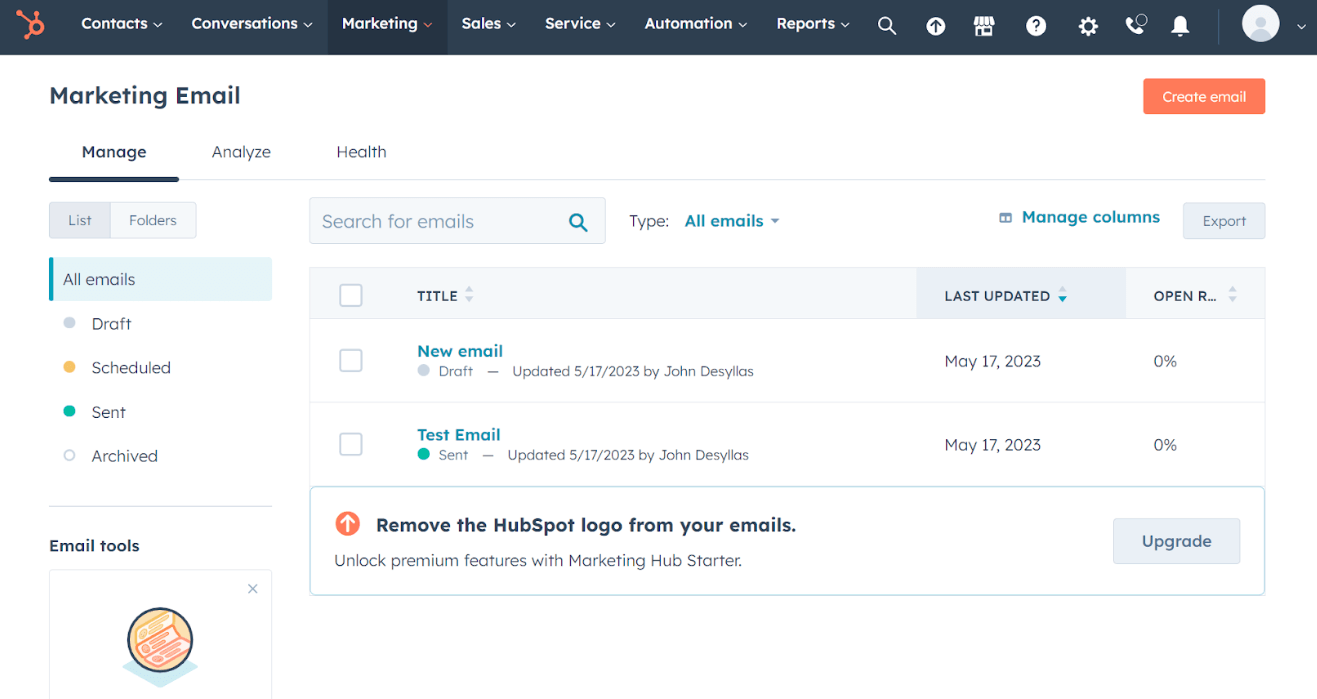
HubSpot is a powerful tool for event teams seeking a comprehensive solution to manage attendee data and event email marketing efforts.
Its intuitive drag-and-drop email builder makes it simple to create polished event invitations, save-the-date campaigns, schedule countdown timers, and last-minute updates. And since there’s an extensive template library, no design skills are required.
Automation is HubSpot’s strong suit. You can build full attendee journeys that contain pre-event nurture sequences, registration confirmations, reminders, and more.
With robust workflow automation, you can also branch paths (e.g., VIP ticket holders vs. general admission) or trigger actions based on attendee engagement.
HubSpot offers a unified customer database that aggregates attendee info across multiple events, registrations, engagement history, and preferences. That way, you can get a 360-degree view of each person. It also handles the event registration flow natively with branded landing pages and forms. After attracting leads, you can directly pull in registration details into your CRM, ensuring that no attendee data falls through the cracks.
HubSpot Features
- Drag-and-drop email editor
- Full workflow automation for event lifecycle
- Unified attendee database and contact management across multiple events
- Strong integrations with event-centric tools
- Advanced analytics
Pros
- Powerful automation for repetitive tasks and pre- and post-event follow-ups
- Excellent data visibility and revenue attribution
- Scales well for complex events with many attendee touchpoints or multiple event types
Cons
- Costs can increase substantially with the number of contacts
- Steeper learning curve and more setup required, compared to Mailchimp and other competitors
Pricing
HubSpot offers a free CRM and email marketing plan with basic tools. Paid Marketing Hub plans start at $15/month/seat for the Marketing Hub Starter plan, which, according to users, comes with numerous feature limitations.
7. Kit
Pricing: Paid plans start at $39/month, free plan
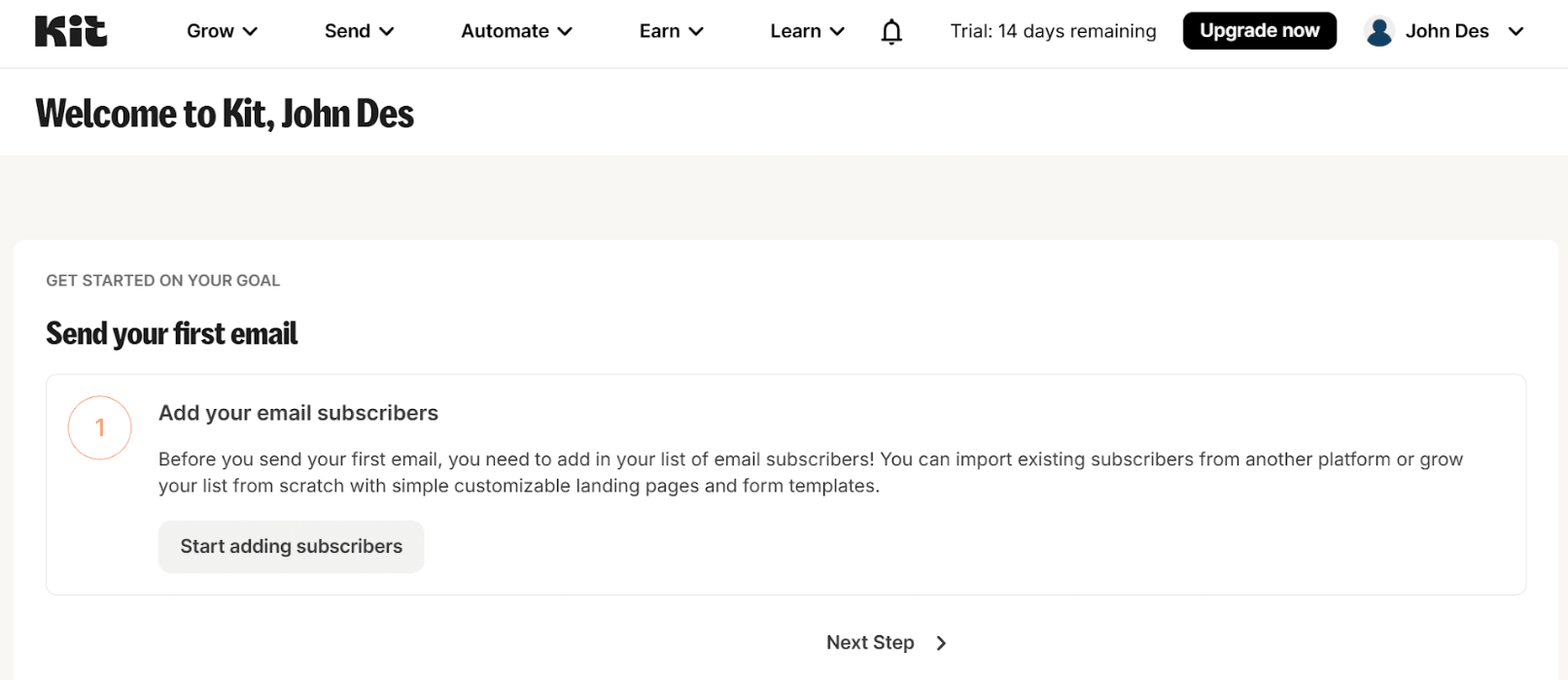
Kit is a creator-friendly choice that works well for teams and marketers who use events to sell subscriptions and monetize their content.
Its no-code email editor lets you create polished event email marketing campaigns and reminder sequences. Elements like countdown timers and segmented content blocks can be added intuitively to your email design. This makes it easy for event marketers to showcase agendas, highlight speakers, or offer early-bird specials.
The email editor is intentionally minimal, and its template library is lacking, according to software reviews. This means that marketers who require robust design capabilities may find these features modest compared to those offered by larger platforms.
With Kit, you can set up “Thanks for registering” email sequences, timed pre-event reminders, and post-event surveys based on attendee behavior. Visual workflow mapping enables the creation of automations based on specific triggers and actions.
The analytics, although lightweight, cover key metrics such as open rates, click-throughs, and subscriber growth, which help fine-tune your event marketing strategy. Built-in landing pages, signup forms, and link pages, which function like a mini event website, allow you to create registration flows or speaker bios without needing a separate builder.
Kit Features
- Visual automation builder
- Drag-and-drop email editor
- Landing pages and customizable registration forms
- Audience tagging and segmentation for ticket type or engagement level
- Integrated features for selling tickets or VIP add-ons
Pros
- Intuitive workflow automation is ideal for lean event teams
- Built-in landing pages for quick registration
- Excellent tagging and segmentation for attendee follow-ups
Cons
- Template variety and deep design customization are limited
- Reporting is more basic than other competitors
Pricing
Kit offers a free plan for up to 10,000 subscribers with unlimited email sends. Paid plans start at $39/month, unlocking unlimited visual automation and email sequences, subscriber engagement scoring, and access to the visual automation template library.
How We Selected The Tools
All of the tools in this list have been tested by our team to provide an unbiased description of its features and capabilities.
We spent hours setting up new accounts and trying each software to provide an accurate experience and show users exactly what they will come across when they sign up. Find more information about our software selection methodology on how we choose tools to feature on the Moosend Blog.
8. Eventcombo
Pricing: Custom based on event size and needs. Demos are available.

Eventcombo is an all-in-one event management platform that brings email marketing, registration, and attendee engagement together in one place. Instead of juggling multiple tools, organizers can manage the full event lifecycle directly in the platform.
Its email features are designed for event workflows, letting you build branded invitations, automated reminders, last-minute updates, and post-event follow-ups. Campaigns adapt to attendee behavior; no-shows get a “we missed you” message, while VIP pass holders receive exclusive updates. Eventcombo’s AI capabilities also help optimize send times, personalize recommendations, and surface insights so every communication feels timely and relevant.
The platform supports customizable registration flows, multiple pass types (general, VIP, early bird), and add-on options such as merchandise or premium sessions. Because registration and attendee data are integrated, segmentation is automatic. Emails can target groups based on pass type, attendance, or check-in status without manual work.
Eventcombo’s analytics and AI-driven insights give planners a complete view of performance. You can track invite-to-registration conversions, engagement rates, session participation and feedback, while AI highlights trends and opportunities for stronger engagement at future events.
Eventcombo Features
- Automated invite, reminder, and follow-up campaigns
- Behavior-based triggers (registration, check-in, attendance)
- AI-driven personalization and optimization
- Built-in registration with customizable flows and add-ons
- End-to-end event analytics and reporting
Pros
- Combines event management and email in one platform
- Automations tied directly to real attendee behavior
- AI-driven insights for smarter targeting and timing
- Streamlined segmentation and reporting
Cons
- Template customization is simpler than in dedicated email tools
- Advanced testing options are lighter than specialized platforms
Pricing
Eventcombo offers custom pricing based on event size and complexity. Organizers can request a demo to explore the platform’s AI-powered email and event management features.
Find the Right Email Tool for Your Event Marketing
When it comes to email marketing for events, there’s no one-size-fits-all solution. Your ideal platform depends on your team’s size, the complexity of your event, and the level of control you want over the attendee experience. Whether you’re running casual meetups or hybrid summits, the right tool should remove friction, not add unnecessary complications.
Select a platform that aligns with your event marketing growth goals. One that saves time, minimizes the need for extra tools, and helps you build meaningful connections before, during, and after every event.
FAQs
Below, you’ll find some of the most common questions about email marketing for events, along with their answers.
1. What kind of emails should I send before an event?
Start with an attention-grabbing announcement, followed by invitation emails, registration confirmations, countdown reminders, and last-minute updates. These help build momentum, drive sign-ups, and keep your event at the top of people’s minds.
2. How can I boost event attendance using email marketing?
Use automation to send personalized reminders, segment your audience to tailor messages (e.g., speakers vs. general attendees), and incorporate dynamic content, such as countdown timers. Well-timed, relevant messages significantly reduce drop-off.
3. Can I automate my entire event email sequence?
Yes. Most modern email marketing tools allow you to automate the entire attendee journey, from registration to follow-up. Look for tools that allow you to set up conditional workflows based on user behavior, such as opening an invitation or clicking on a session link.
4. Do I need separate tools for landing pages and forms?
Not necessarily. Many email platforms now include built-in landing page editors and signup forms, allowing you to manage everything from one place. This makes it easier to maintain consistent branding and minimize friction in your registration process.
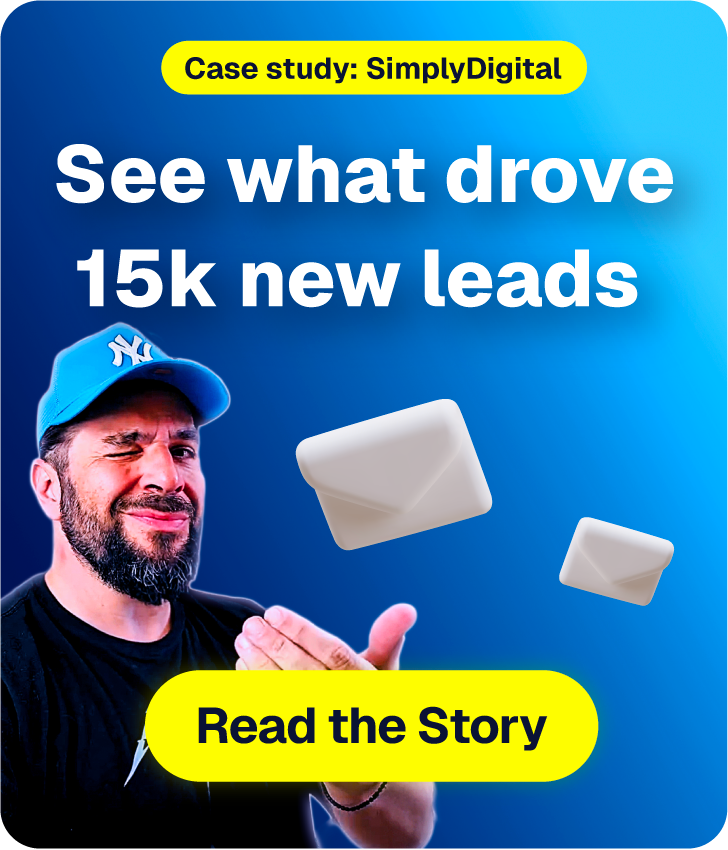
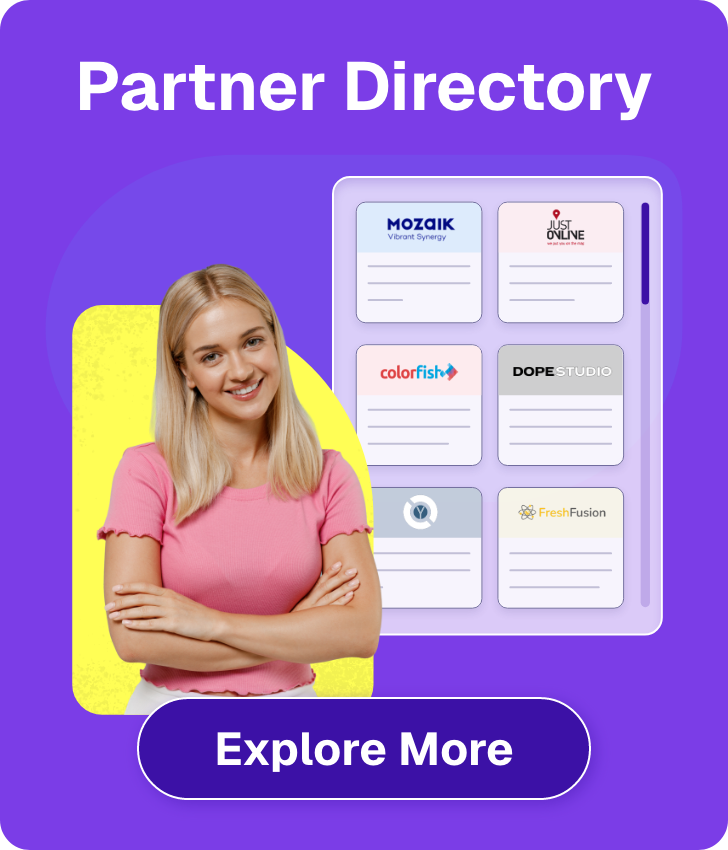

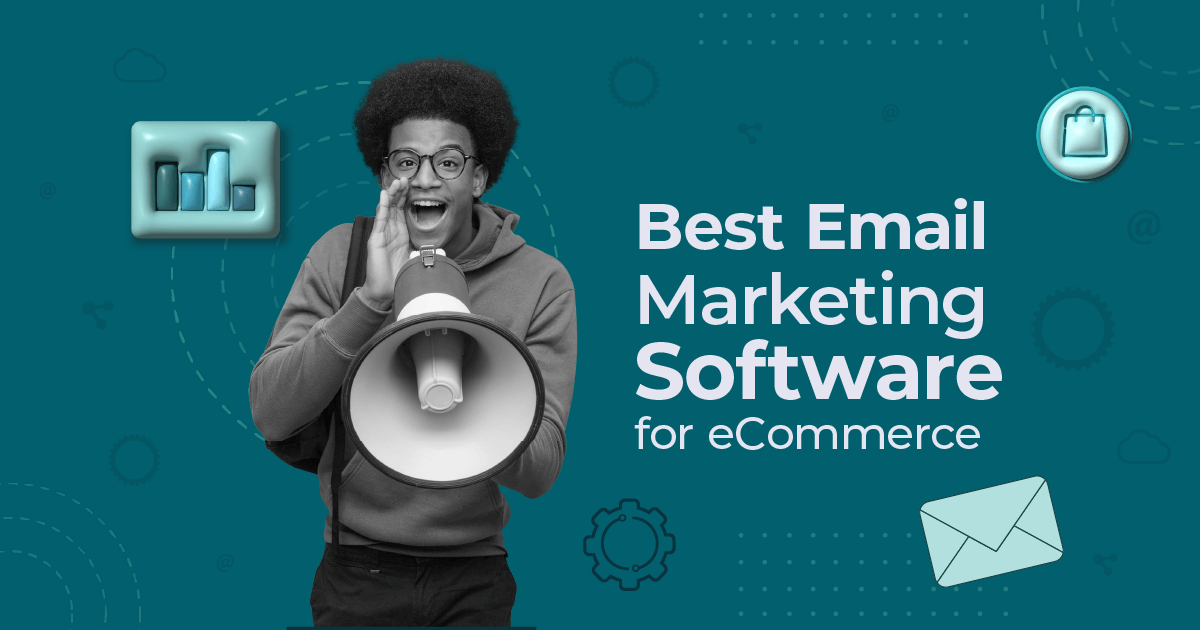
 Published by
Published by

